Key takeaways
- Shadow people are often described as dark, humanoid figures that elicit feelings of being watched and evoke strong emotional responses.
- Explanations for shadow people range from psychological factors, such as sleep paralysis and stress-induced hallucinations, to cultural interpretations that view them as spirits or guardians.
- Experiences with shadow people prompt reflections on human perception and the unknown, suggesting they may symbolize deeper personal fears and curiosities.
- Responding calmly and creating a sense of safety can alter the interaction with shadow people, indicating the importance of environment and mindset in these encounters.
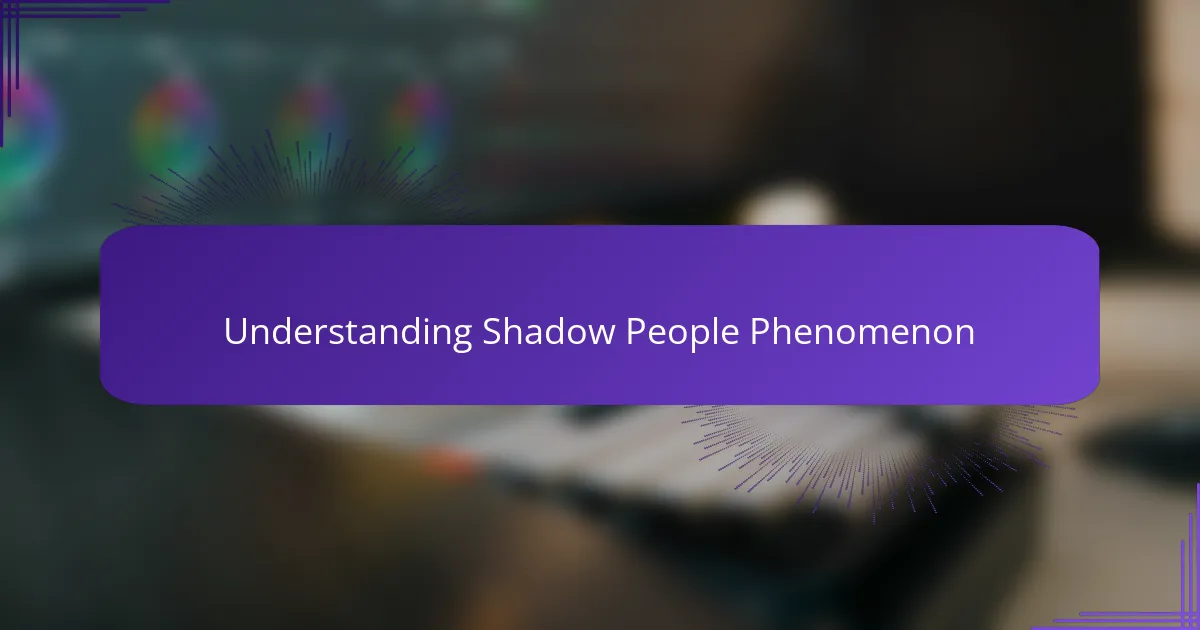
Understanding Shadow People Phenomenon
When I first encountered the idea of shadow people, I felt a mix of curiosity and unease. These dark, fleeting figures are often described as humanoid shapes without distinct features, appearing mostly in the periphery of our vision. It makes me wonder—are they a trick of the mind or something more mysterious?
From what I’ve learned, many explanations attempt to demystify shadow people. Some say they are hallucinations triggered by sleep paralysis or stress, while others believe they might be interdimensional beings. Personally, I think the way our brains try to interpret vague shapes in darkness plays a big role in these experiences.
Have you ever felt like you’re being watched, only to glance and see nothing? That familiar chill and the inexplicable sense of presence are what make shadow people so compelling—and unsettling. They challenge us to question what our eyes and minds truly perceive when the light is low and the world feels just a bit off.
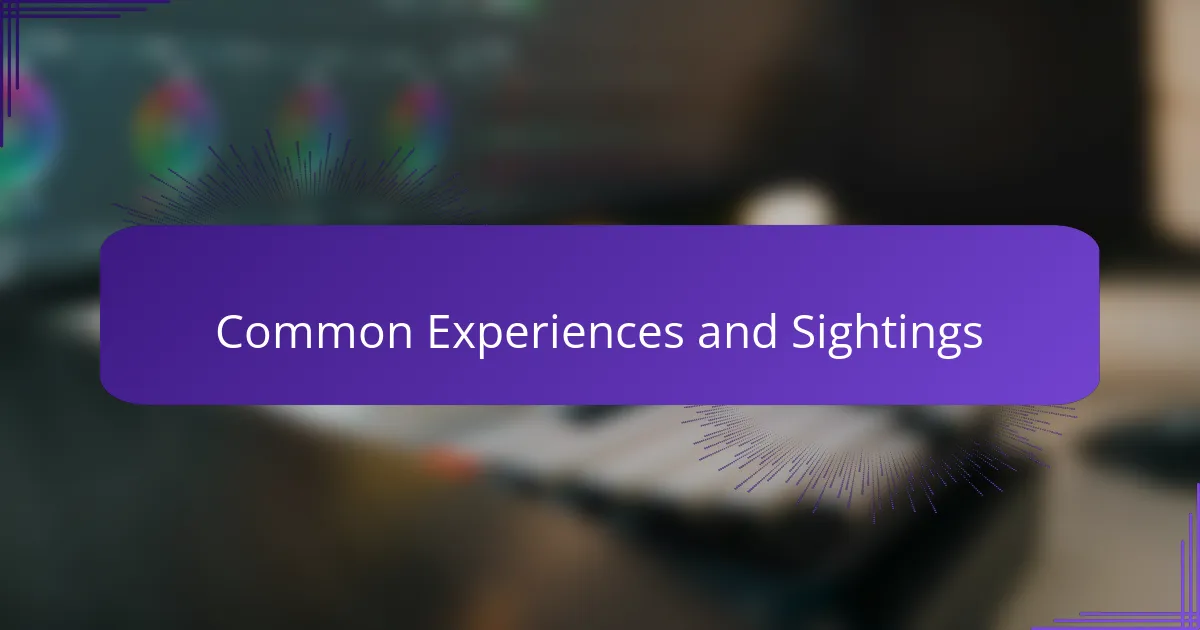
Common Experiences and Sightings
One common thread I’ve noticed in shadow people encounters is the feeling of being watched, even when nothing visible is there. It’s as if a dark silhouette lingers just beyond direct sight, leaving a chill that’s hard to shake. Have you ever caught a glimpse of movement at the edge of your vision, only for it to vanish when you look straight at it? That fleeting, elusive nature seems to define these sightings.
Many people describe sensations tied to these shadowy forms—like sudden dread or an icy breeze passing through the room. From what I’ve gathered, these physical reactions make the experience feel deeply personal and unsettling, not just a simple visual trick. It makes me wonder how much our bodies pick up on things our conscious minds can’t fully explain.
Interestingly, shadow people don’t always appear alone. Accounts often mention multiple figures or shadows moving together, which to me adds another layer of mystery. When I hear about groups of these dark shapes, I imagine a kind of silent presence, almost like an unspoken communication happening just beyond our grasp. Have you ever thought about what it would mean if these weren’t random sightings but something more intentional?
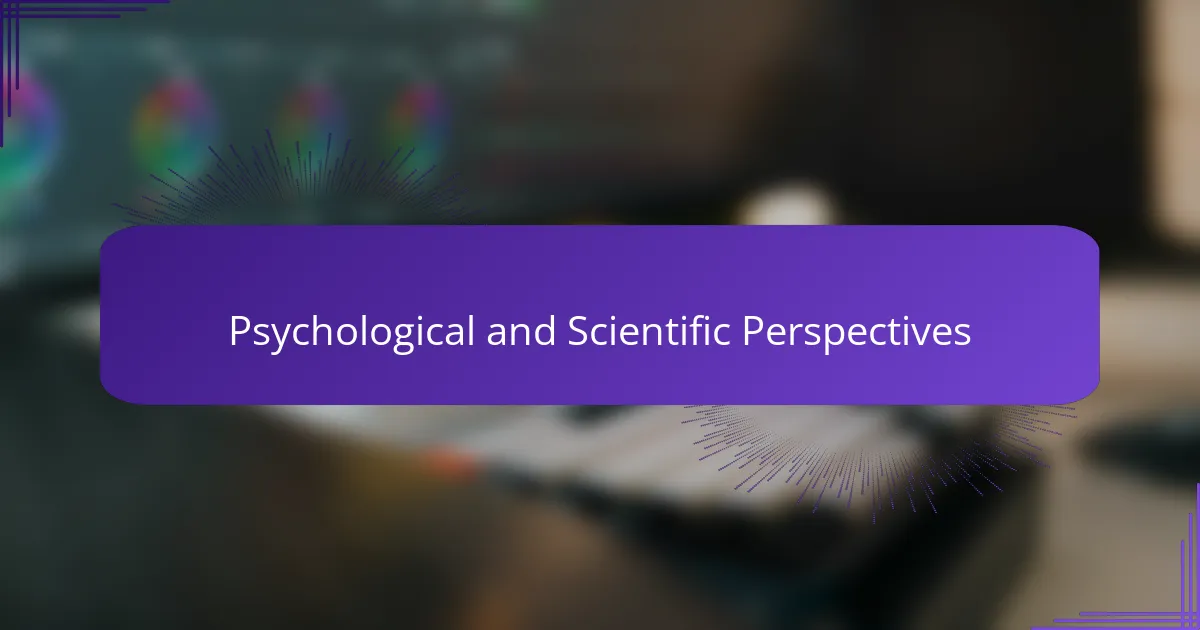
Psychological and Scientific Perspectives
When I dive into the psychological angle, I’m struck by how our brains are wired to make sense of shadows and shapes—especially in low light. It’s easy to see how a quick glance could become a shadow person in our minds, a kind of mental shortcut when we’re tired or stressed. Have you ever caught yourself imagining things in the dark that weren’t really there? I have, and it’s fascinating how powerful our perception can be in crafting these eerie moments.
Scientifically, sleep paralysis often gets thrown into the mix as a culprit behind many shadow people encounters. From what I understand, during sleep paralysis, your mind is awake but your body is frozen, and hallucinations can feel incredibly real. I remember reading accounts where people saw dark figures looming over them, an experience that’s both terrifying and puzzling. Isn’t it interesting how the mind blends reality with dreamlike images during such states?
There’s also the role of environmental factors that science can’t ignore—like the way low-frequency sounds or electromagnetic fields might affect brain activity. While research is still exploring these connections, I can’t help but wonder if these subtle influences nudge our perception toward seeing shadowy figures. It makes me think: how much of what we experience is shaped by conditions we rarely notice but deeply feel?
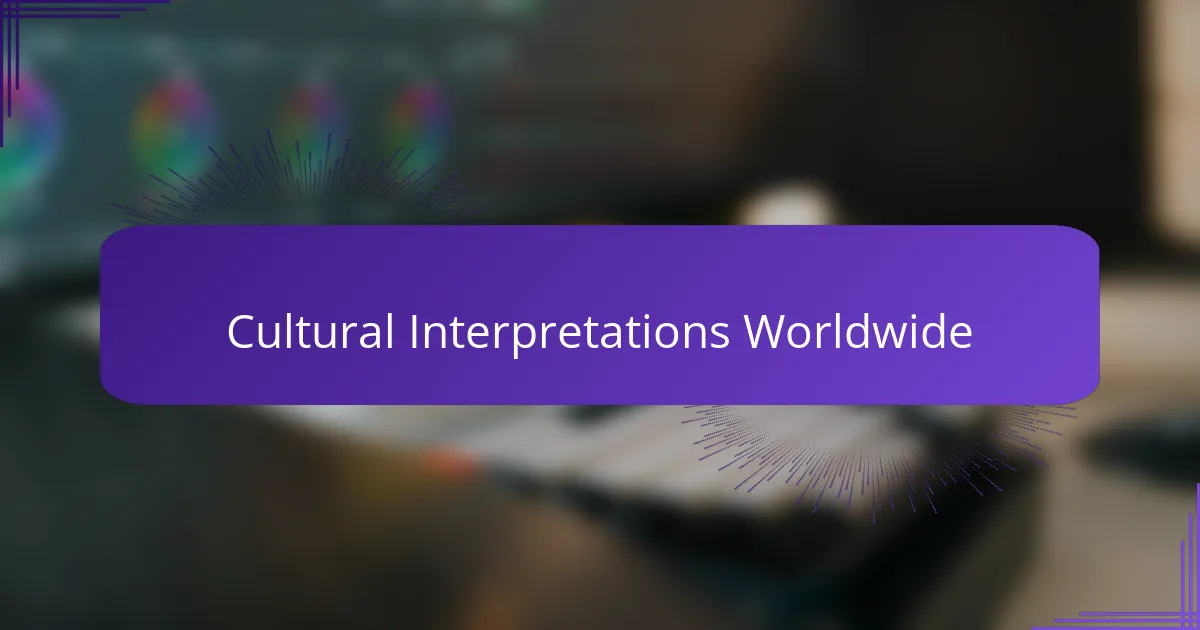
Cultural Interpretations Worldwide
Around the world, shadow people take on different meanings that really caught my attention. In some cultures, they’re seen as spirits of the dead trying to communicate, while others view them as omens or warnings. Have you ever considered how much our cultural background shapes what we imagine when we see these dark shapes?
I’ve come across stories from Indigenous peoples who interpret shadow figures as ancestral guardians, watching and protecting from the unseen realm. It struck me how comforting that perspective is compared to the fear these entities often inspire in Western accounts. Does it change your view when you think of shadow people as protectors rather than threats?
What fascinates me most is the universality of the experience despite the differences in explanation. Whether called djinn, shadow beings, or phantoms, these figures emerge at the edge of human awareness in cultures everywhere. It makes me wonder—are shadow people a shared symbol in our collective psyche, expressing something deep and ancient?
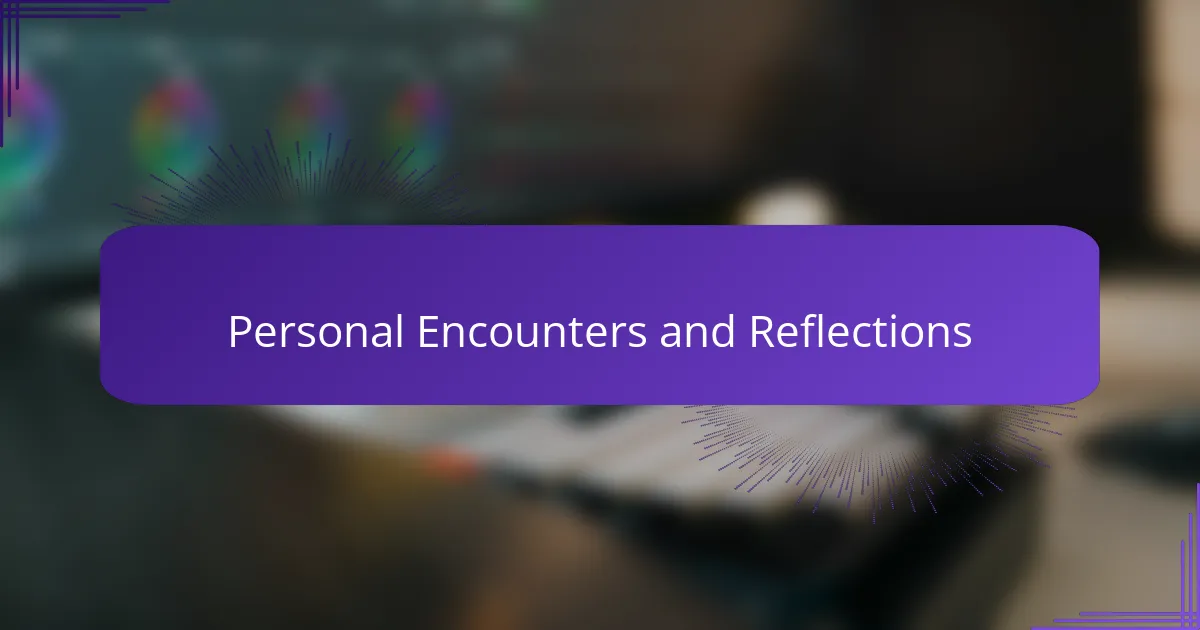
Personal Encounters and Reflections
I remember the first time I thought I saw a shadow person—just a flicker of a dark shape slipping past my bedroom door. My heart raced, and a chill ran down my spine, but when I looked again, nothing was there. That moment stuck with me, weaving a small thread of unease into my everyday life.
Over the years, I’ve found that these encounters often leave me grappling with a strange mix of fear and fascination. Why do these shadows feel so undeniably present, yet slip away the moment I try to confront them? It’s like they exist in a space just beyond understanding, teasing the edges of reality.
Sometimes, reflecting on these experiences makes me wonder if shadow people are mirrors of our own fears and curiosities. Could they be a reminder that there’s still so much about the world—and ourselves—that we haven’t fully grasped? This thought both unsettles and intrigues me, keeping me drawn to the mystery.
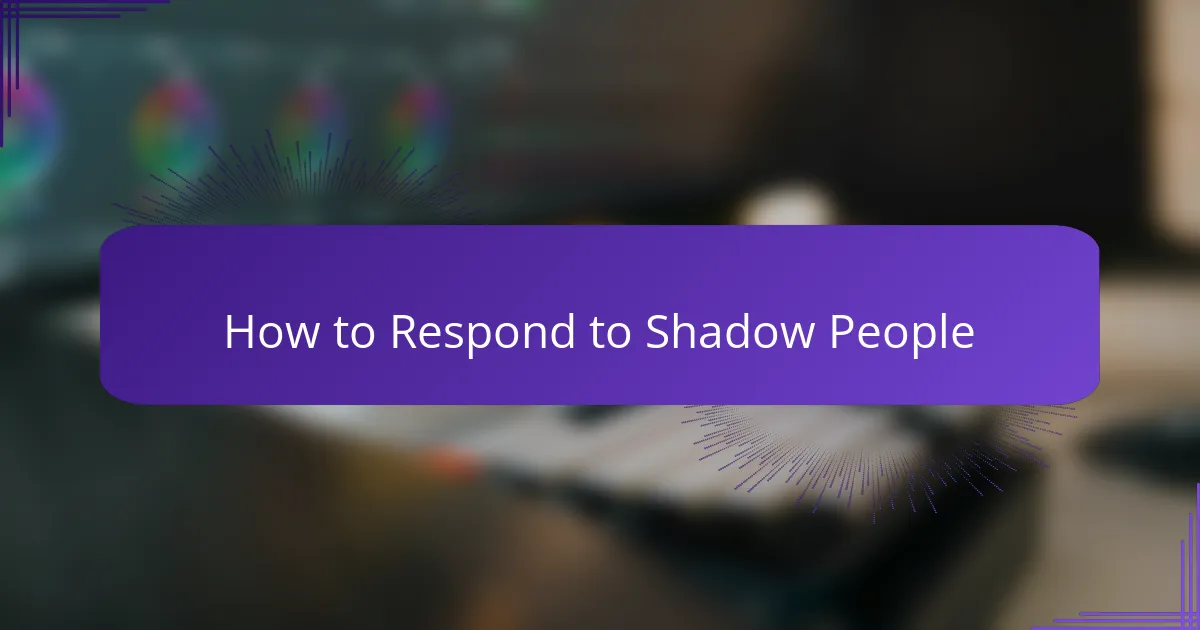
How to Respond to Shadow People
When faced with a shadow person, my first instinct has often been to stay calm and avoid sudden movements. From what I’ve gathered, reacting with fear or aggression might actually amplify the experience, almost like feeding into the energy these figures seem to carry. Have you noticed how sometimes just taking slow, deliberate breaths can help ground you in moments of uncertainty?
I’ve tried speaking to these shadowy presences softly, almost like trying to acknowledge their existence without provoking them. It’s strange, but that gentle approach feels less confrontational and, in some ways, less frightening. Could it be that treating them as part of the environment rather than as threats shifts the whole dynamic?
In my experience, creating a sense of safety in your space makes a real difference. Turning on a light, opening a window, or even calling out to a trusted person nearby can break the tension. When we take back control of our environment, those shadowy figures seem to lose some of their power—almost like they’re tied to the vulnerability we feel in the dark. Have you ever noticed how light changes the whole mood of a room?
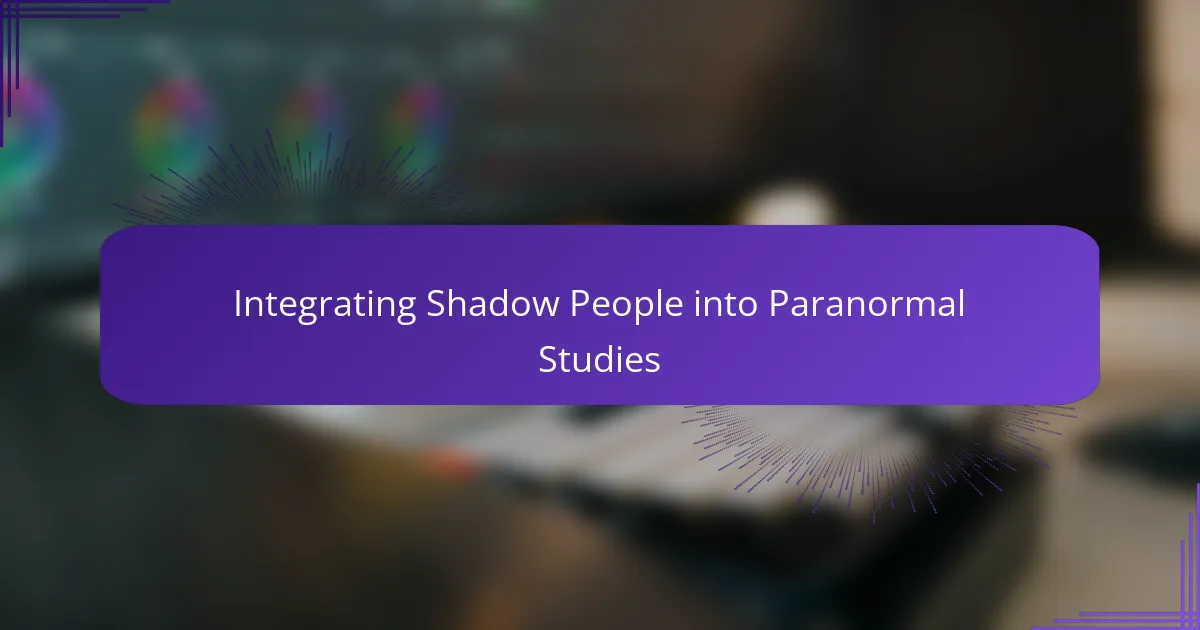
Integrating Shadow People into Paranormal Studies
Integrating shadow people into paranormal studies feels like opening a door to one of the more elusive and challenging phenomena we encounter. From my perspective, these shadowy figures don’t fit neatly into traditional categories of ghosts or spirits, pushing researchers to expand their frameworks. Have you ever thought about how paranormal investigators might adjust their tools or methods to capture something so fleeting and intangible? It’s a puzzle that demands both scientific rigor and open-minded curiosity.
In my experience following the research, I see immense value in combining anecdotal reports with interdisciplinary approaches—like neuroscience, psychology, and even cultural anthropology—to get a fuller picture. When shadow people accounts cross over into varied fields, we begin to see patterns that a single lens might miss. Doesn’t it feel like the phenomenon is inviting us to rethink what we consider “paranormal” and how deeply perception shapes our encounters?
What strikes me most is how integrating shadow people into paranormal studies challenges the community to balance skepticism with respect for personal experience. I’ve observed that those who dismiss these sightings outright risk missing profound insights about human consciousness and the unknown. Could it be that studying shadow people is as much about understanding ourselves as it is about unraveling the paranormal? This dual quest makes the subject endlessly fascinating to me.